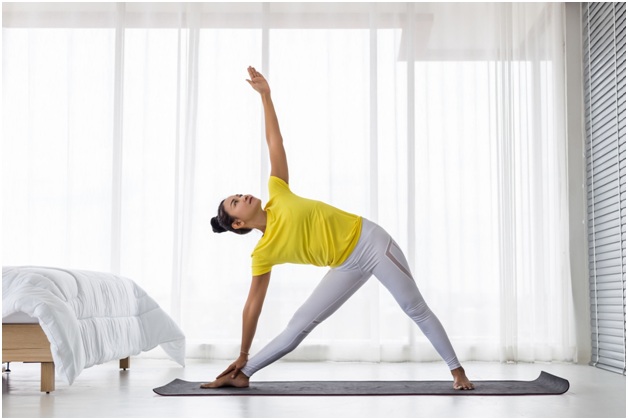Yoga and Pilates explained: how they help in the management of stress

With the modern world being fast-paced and highlystressful, some of ushave lifestyles that render us unable to switch off from fulfilling many roles. That can keep us awake at night and exhaust us during the day, resulting in anxiety symptoms.
But you don’t have to worry;the holistic kind of help is at hand. To boost your mental health, you may opt to engage yourself in therapy sessions from the best online therapy apps or use integrative exercise activities such as Pilates or yoga.
For many, even after understanding regular exercise improvesphysical and mental health, developing a regular exercise routine and sticking with it is the real challenge. But when you experience the results you’re looking for, it becomes easier to get moving every day; whether that’s easing symptoms anxiety, trimming your waistline, or improving your energy, sleep, and mood, consistent workout activities help to alleviate anxiety and stress.
Pilates explained
Pilates was introduced into America to help injured dancers and athletesto return to exercise safely and maintain their fitness. Pilates requires a lot of focus and concentration since the body moves through precise ranges of motion, lengthening and stretching major muscle groups in a balanced fashion. There is a prescribed rhythm, placement, and breathing pattern in each exercise.
Body muscles are never worked to exhaustion in Pilates;there’s no straining or sweating, just intense concentration. It involves performing exercise sequences in low repetitionsover a session of 45 to 90 minutes five to ten times.
How can regular Pilates sessionsimprove your health and fitness?
There are two primary forms of Pilates, namely:
Equipment-based Pilates – here, you use specific equipment to work against spring-loaded resistance.Thisincludes a moveable carriage that is pushed and pulled along its tracks. This form of Pilates includessmall equipment that offers resistance to the muscles, and weights, such as dumbbells.
Mat-based Pilates – these are exercises performed using your body weight and gravity to provide resistance on the floor. It aims to condition the body supporting muscles to improve coordination, posture, and balance.
Regular Pilates session helps to improve health and fitness. In summary, here are thehealth benefits of Pilates:
- Increases tone and muscle strength, particularly in thelower back, buttocks, hips, and abdominal muscles.
- Enhanced muscular control of limbs and back.
- Stress relaxation and management.
- Balanced muscular strength.
- Improved spine stabilization.
- Prevents and rehabilitates injuries related to muscle imbalances.
- Improved posture.
- Improved physical balance and coordination.
- Safely rehabilitatesspinal and joint injuries.
- Prevents musculoskeletal injuries.
- Relaxes the upper back, shoulders, and neck.
- Improved flexibility.
- Increasescirculation and lung capacity through deep breathing.
- Increases body awareness.
- Improves concentration.
Yoga explained
Dating back thousands of years, yoga is an ancient Indian philosophy that was designed forspiritual enlightenment. In modern times, yoga is regardedas a gentle form of stress management and exercise due to its physical aspects.
There are many varieties of yoga practices and anyone can start; whether you’re a professional athlete or a couch potato, fitness levels and size do not matter as there are beginner classes in every style and modifications for every yoga pose. Each style essentially relies on structured poses practiced with breath awareness, which is a great way of getting in tune with your inner self and body.
Mental benefits of yoga
Stress can have devastating effects on the mind and body and reveals itself in many ways. The symptoms include sleeping problems, neck or back pain, drug abuse, headaches, and an inability to concentrate. Yoga effectively develops coping skills to help a person have a more positive outlook on life.
The incorporation of breathing and meditation in regular yoga helps improve an individual’smental well-being. It also helps to:
- Increase body awareness
- Create mental calmness and clarity
- Relax the mind
- Relieve chronic stress patterns
- Sharpen concentration
- Center attention
Some physical benefits of yoga are:
- Increasing muscle tone and strength
- Increasing flexibility
- Improvingenergy, respiration, and vitality
- Reducing weight
- Maintaining a balanced metabolism
- Improving circulatory and cardio health
- Improving athletic performance
Whatever benefits you’re seeking to get from a fitness plan, mixing different types of physical activity is key. Effective exercise plans include a mix of three elements: strength training, aerobic or cardio training, as well as balance and flexibility exercises.
Aside from maximizing the health benefits, this will keep your workouts interesting and varied. Additionally, there are communal benefits of taking Pilates or yoga classes in small groups to reduce isolation, which could come along with anxiety disorders. That said, it’s clear that yoga and Pilate have plenty to offer in improving overall well-being and managing anxiety.








